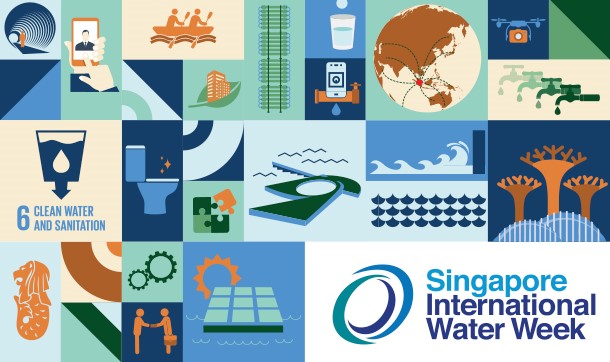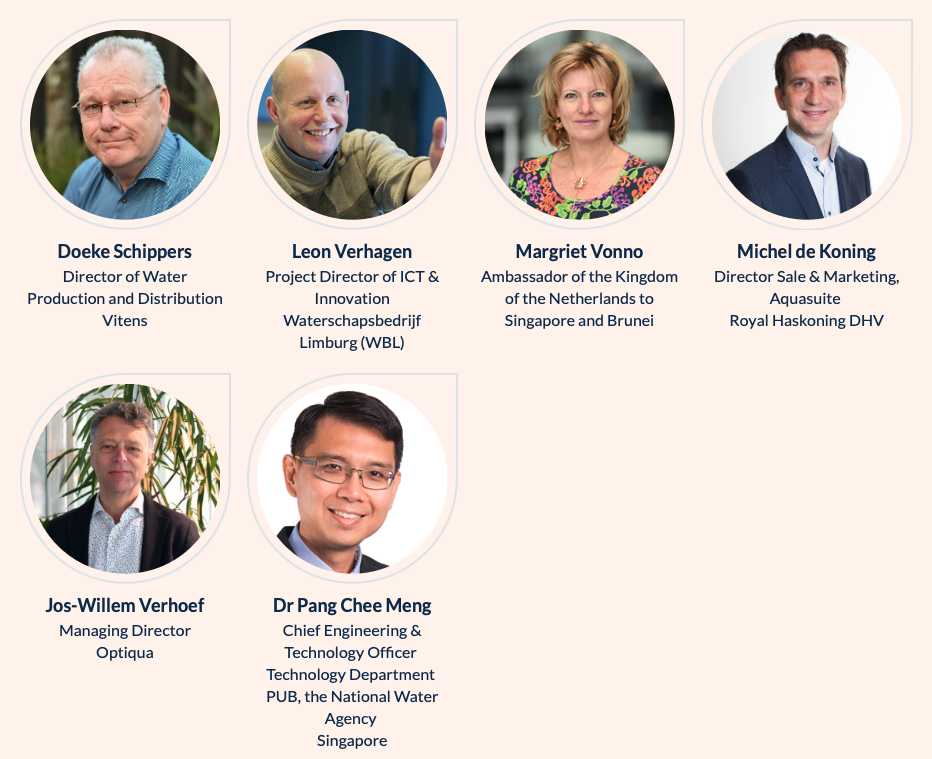

[SIWW] Increased Efficiency using Digital Water Solutions for Water Utilities
From digital water solutions to adaptation, and from coastal management to zero waste solutions. The Dutch water sector is actively participating during SIWW2021 Online, the virtual edition of the Singapore International Water Week. One of the opportunities to learn more about innovative water expertise, and hands-on experiences, are the Innovation to Practice series (I2P). I2P highlights proven innovations that can make positive contributions to water challenges worldwide. We invite you to join in on the discussions. Register now as a Trade Visitor to get complimentary access to this session.
Case 1.1: AquaSuite / Vitens
Water use varies greatly depending on the time of day, location, weather and many other factors. Each morning millions of us take a shower; on hot days we use hosepipes to water our gardens. The challenge is how to predict and meet the demand?
Vitens is the Netherlands’ largest drinking water provider, supplying more than 5.6 million households in Friesland, Overijssel, Gelderland, Flevoland and Utrecht with clean drinking water. Vitens supplies around 360 billion litres of water per year. Managing and optimizing operations for almost 240 pumping stations and 96 production facilities is a challenge. Especially in times of prolonged draught. Vitens decided to centralise automation and ICT and apply smart digital solutions to optimise the drinking water production and meet this challenge.
While all assets are fully automated locally, operations come together centrally in a central control room where a smart water solution provides the top-level holistic control over the water loop. It provides source to tap overall control using AI to predict demand and all levels, flows and pressure in the network. The water supply is now fully automated. With 65% less variations in production it results in a calm network that can be operated with less people. And this has also resulted in improved water quality (42% less particle load in produced water) and energy savings (7%).
Case 1.2: AquaSuite / WBL
There are substantial challenges in wastewater treatment management: climate change, an urgent need for sustainability, and stricter regulations make transport systems and treatment plants increasingly technically complex. At the same time, a growing number of digital technologies can convert data streams into valuable insights. That is why WBL is focusing on the digital transformation of its wastewater treatment infrastructure.
The transformation consists of two parts: the development and implementation of a big data platform and the implementation of a machine learning application on this big data platform. This monitors the performance of all 149 WBL sewage pumping stations and will detect abnormal behaviour at an early stage: blockages, leaks, unaccounted for water (infiltration or illegal spills) and early detection of pump blockage or performance reduction.
By using machine learning for the entire system, its performance will improve continuously. It will also allow for more efficient management and anticipate the need for maintenance — the largest expense for water authorities. The professional implementation and management of these rapidly developing technologies, which have to run 24/7 for operational support for operators and maintenance staff, places high structural demands on the cloud platform to be used. This is one of the reasons why WBL has chosen Microsoft Azure for the implementation of the big data platform and the solutions for advanced machine learning and artificial intelligence.
Case 2: Optiqua / PUB
Monitoring water quality is an important part of the operations of a water utility. Traditionally, grab sampling and laboratory analysis have been the pre-dominant approach to quality monitoring. The use of grab samples, however, is not well suited for continuous monitoring of changeable water quality, as it only provides snap shots of the water composition and no information on variation therein during the time between samples. A further drawback of this approach is the time to result, which can be hours or even days. To monitor the dynamics in water quality, as they for example occur in drinking water distribution networks, and to facilitate a quick and timely response to quality incidents and pro-active network operations, real time water quality information is vital.
Since all substances that come into the water matrix influence (the Refractive Index (RI) of the water, careful monitoring of this refractive index using Optiqua’s EventLab system has proven to be a very powerful tool in drinking water quality event detection. Advantages of this technique include consistent sensitivity for all substances, response linear with concentration and high resistance to matrix interference. Once an unexpected change in RI is detected, the Root Cause of this so call “Event”, needs to be established to determine the proper response by the utility company. With AI concepts Events could be classified into events that could adversely impact water quality. This will provide utility companies with even more actionable information.
| Agenda |
|
Introduction
Wouter de Hamer, Chair Singapore-Netherlands WaterHouse and Director Business Development APAC for Royal HaskoningDHV
|
|
Opening Remarks
H.E. Magriet Vonno, Ambassador of the Kingdom of the Netherlands to Singapore and Brunei, Embassy of the Kingdom of the Netherlands in Singapore
|
|
Case 1.1 presentation
Michel de Koning, Director Sales and Marketing Aquasuite, Royal HaskoningDHV
Doeke Schippers, Director water production and distribution, Vitens
|
|
Case 1.2 presentations
Michel de Koning, Director Sales and Marketing Aquasuite, Royal HaskoningDHV
Leon Verhaegen, Project Manager ICT & Innovation, Waterschapsbedrijf Limburg
|
|
Case 2 presentations
Jos-Willem Verhoef, Optiqua
TBN
|
|
Moderated panel discussion Q&A
Michel de Koning, Director Sales and Marketing Aquasuite, Royal HaskoningDHV
Doeke Schippers, Director water production and distribution, Vitens
Leon Verhaegen, Project Manager ICT & Innovation, Waterschapsbedrijf Limburg
Jos-Willem Verhoef, Optiqua
TBN
|
|
Closing
Wouter de Hamer, Chair Singapore-Netherlands WaterHouse and Director Business Development APAC for Royal HaskoningDHV
|
Speakers

Organizer
DUTCHCHAM
Email: info@dutchcham.sg
Website: www.dutchcham.sg
